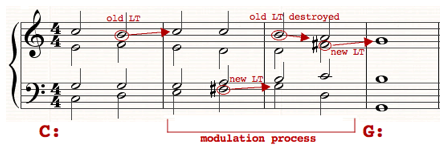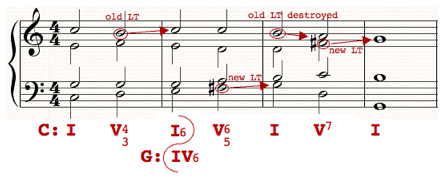 |
|
 |
 |
 |
 |
 | Modulation, in a broad sense, is the process of going from one condition to another. In the context of tonal, functional harmony, when we speak of modulation we’re typically referring to the process of going from one tonal center (key) to another.
It must be emphasized that the process is the modulation. If within a piece of music a phrase ends in one key and the next phrase begins in another, no modulation has occurred. The piece has simply shifted keys. There was no process in between, so there was no modulation, just a shift.
Note: Not every trained musician understands modulation in this way. Some simply refer to any key change as a modulation, whether a process exists between the two keys or not.
|
 |
 |
 |
 |
 |
 |
 | Within the process of modulation, two conditions usually occur that make it strong and effective. Very simply stated they are:
|
 |
 |
 |
 |
 |
 | 1) Destruction of the old key
2) Establishment of the new key
|
 |
 |
 |
 |
 |
 | Both of these conditions usually involve the Leading Tone (LT).
|
 |
 |
 |
 |
 |
 | To destroy the old key, take away its LT.
To establish a new key, establish a new LT.
|
 |
 |
 |
 |
 |
 |
 | When a new LT is established, it usually functions within a new V or viiº. A strong, effective tonal modulation will generally contain an authentic cadence, utilizing the V or viiº, leading into the new key center.
|
 |
 |
 |
 |
 |
 |
 | Notice in the example above, the chord on the downbeat of the second measure is labeled with two different roman numerals. This chord is called a common chord because it can function in the old key and in the new key. This Common Chord Modulation is probably the most common type of tonal modulation.
|
 |
 |
 |
 |
 |
 |
 | Rule of Thumb: When looking for a tonal modulation, look for two cadences in the new key. If there is only one cadence with a new V, and the music returns to the original key, chances are the new V is a Secondary Dominant (see Theory III) and doesn’t function as a modulation.
|
 |
 |
|


 |
 |
 |


